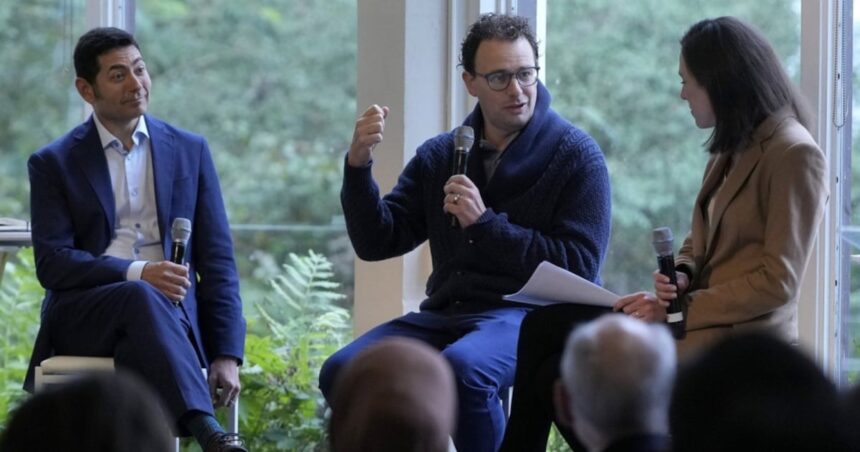The U.S. District Court for Northern California delivered what many legal experts are calling a landmark ruling yesterday, dismissing key portions of a copyright infringement lawsuit against AI developer Anthropic. Judge Miranda Lee rejected the claim that Anthropic’s Claude AI violated copyright law merely by training on authors’ published works without explicit permission.
This decision marks the first major legal victory for AI companies in the ongoing battle between content creators and artificial intelligence developers. The ruling specifically addresses the complaint filed by the Authors Guild and seventeen prominent writers including Michael Chabon and George R.R. Martin, who alleged that Anthropic engaged in “systematic theft” of their intellectual property.
“The court finds that computational analysis of text for pattern recognition does not constitute copyright infringement when the output creates transformative value,” wrote Judge Lee in her 42-page opinion. She distinguished between copying works verbatim and using them as training data, adding that “reading to learn is fundamentally different from reading to reproduce.”
The lawsuit, filed last September, represents one of several legal challenges targeting leading AI developers. Similar cases are pending against OpenAI, Meta, and Google, with content creators arguing these companies built billion-dollar technologies by exploiting their creative works without compensation or consent.
Legal analyst Catherine Westbrook from Davis & Pierce told me this ruling creates significant precedent. “This decision essentially validates the ‘fair use’ argument that AI companies have been making all along. It suggests that training large language models on copyrighted material falls within acceptable transformative use under existing copyright law.”
However, the court didn’t dismiss the entire case. Judge Lee allowed claims to proceed regarding specific instances where Claude allegedly reproduced substantial portions of the plaintiffs’ works verbatim when directly prompted by users.
“The distinction the court draws between training and reproduction is crucial,” explains Professor Martin Chen from the University of Toronto’s Faculty of Law. “The ruling acknowledges that while AI systems can learn from existing works, they cannot be used as vehicles to distribute unauthorized copies of those works.”
The Authors Guild expressed disappointment but noted the partial survival of their claims. “While we strongly disagree with portions of the ruling, we’re encouraged that the court recognized AI systems cannot be allowed to regurgitate our members’ protected expression,” said Douglas Preston, president of the Authors Guild.
Anthropic’s response was measured but positive. “We believe AI development and creative industries can thrive together through thoughtful collaboration,” said spokesperson Daniela Amodei. “This ruling affirms our position that AI training represents a transformative use that benefits society while still respecting creators’ rights.”
For Canada’s growing AI sector, the ruling carries significant implications. Toronto-based Cohere and other Canadian AI firms have been watching these U.S. cases closely, as similar legal principles often influence Canadian copyright jurisprudence.
Financial markets responded immediately. Anthropic is privately held, but public companies with significant AI investments saw their stocks climb. Microsoft, a major Anthropic investor, rose 2.3% following the news.
The ruling arrives at a pivotal moment in AI regulation. Just last month, the Canadian government introduced the Artificial Intelligence and Data Act, which focuses on responsible AI development but doesn’t specifically address copyright concerns. Meanwhile, the European Union’s AI Act, set to take effect next year, imposes transparency requirements about training data but also avoids definitive positions on copyright.
Darren Tsui, CEO of Toronto-based startup TextGen, told me this ruling provides some breathing room for smaller AI companies. “The legal uncertainty around training data has been hanging over every AI startup’s head. While this doesn’t resolve everything, it suggests courts may take a pragmatic approach that allows innovation to continue.”
The ruling’s nuance about reproduction is particularly significant. By distinguishing between learning from content and reproducing it, the court has potentially created a framework for how AI companies must design their systems moving forward.
“This isn’t a carte blanche for AI companies,” warns intellectual property attorney Jennifer Richards. “They still need guardrails to prevent their models from verbatim reproduction. The technical challenge of ensuring compliance just got more complex.”
For creators, the ruling represents a setback but not a complete defeat. The court acknowledged that specific instances of reproduction could still constitute infringement, suggesting AI companies must implement effective safeguards against such reproduction.
Whether this ruling will stand remains uncertain. The Authors Guild has already announced plans to appeal, and similar cases in different jurisdictions could reach different conclusions. The EU, with its stronger author protections, might take a more restrictive view.
What’s clear is that this ruling won’t be the final word in the evolving relationship between AI and copyright law. As AI capabilities advance, the line between “learning from” and “copying” content will continue to blur, likely requiring either new legislation or a series of court decisions to fully clarify.
For now, AI developers have reason for cautious optimism, while content creators must reconsider their legal strategies in a landscape that just became significantly more challenging.






